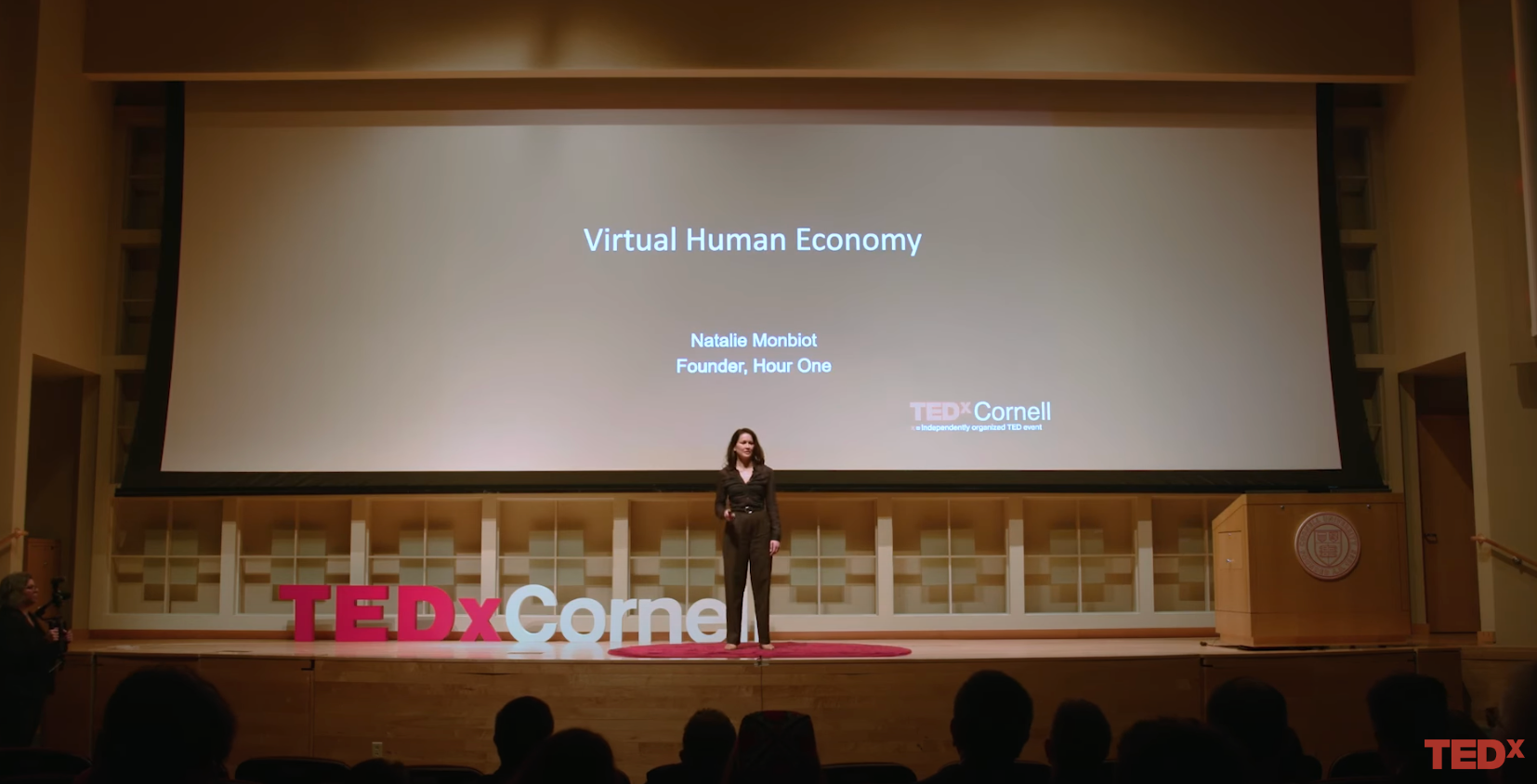Remember when ChatGPT almost passed the bar exam? Its superior, GPT-4, just entered the top 10% of test takers—and what an entrance it has made. The more intelligent, accurate, and creative version of GPT-3 is here, and it has a whole load of advanced use cases in its backpack.
Before GPT-4, we had GPT-3.5, an update that largely flew under the radar thanks to its quiet release. To the general user base, GPT-3.5 was slightly better than GPT-3 behind the scenes because it included systems that could be fine-tuned to deliver specific outcomes and tasks. In contrast to 3.5’s silent emergence, GPT-4 is making waves—so much so that Open AI’s CTO Mita Murati said, “I think less hype would be good.”
The consensus is that tools like GPT-4 don’t need to be perfect to offer exceptional business value. 33% of businesses have already started implementing generative AI, even with limited use cases. Investing in generative AI helps reduce time, money, and resource constraints that are often part and parcel of video content creation in industries like marketing and HR.
Rather than waiting for the inception of GPT-1000 in the future, many organizations are now diving into generative AI to create videos with speed and scale.
In this post, we will review what GPT-4 is and how it differs from other releases. We will look at GPT-4 use cases, what this means for video content creation and how it can benefit you.
GPT-4: New, improved, and ready to take over?
Released under Microsoft’s command following its $10 billion investment in Open AI, GPT-4 is the latest iteration of generative AI technology. Similarly to its predecessor, GPT-3, it is a large language model (LLM) that reverts to a vast text dataset and uses deep learning to respond to user-generated prompts.
A wonder many people have is can GPT-4 make videos? Before its launch in March 2023, the rumor mill wondered whether GPT-4 video content generation was on the cards. As it turns out, it can’t—it doesn’t support the ability to turn text into videos yet. But that doesn’t mean it isn’t groundbreaking and impressive. GPT-4 has multimodal models, meaning you can input more than just textual prompts. It accepts multiple data types, including images, documents, screenshots, and diagrams, then it will contextualize, summarize, and classify the data.
For example, it’ll tell you what’s funny or scary about a picture. When Open AI president Greg Brockman showed GPT-4 a picture of a squirrel with a camera and asked, “What’s so funny?” the language model replied, “We don’t expect them to use a camera or act like a human.” Well, it’s not wrong. The New York Times presented it with an image of food in the fridge, and GPT-4 suggested the meals you could make with the ingredients. Pretty handy!
Generative AI’s “iPhone Moment” Has Only Just Begun
AI-generated content will soon become the norm (if it hasn’t already), and GPT-4’s multimodal feature makes it perfect for use cases like large-scale translation, organization, and interactive learning.
For example, look at the Government of Iceland, which has trained GPT-4 to recognize correct Icelandic grammar and cultural knowledge to preserve their language. Payments processor Stripe uses it to help employees find technical documentation. Duolingo has implemented it to provide interactive learning experiences and ensure that no two conversations on its platform are the same.
These collaborations only scratch the surface of GPT-4’s potential. Your own business can collaborate with GPT-4 in a way that was impossible with GPT-3. Open AI’s new “steerability” feature enables you to fine-tune the AI’s behaviors and enter your brand guidelines as a system prompt so that you can create an appropriate style.
While this allows you to personalize the text produced, GPT-4 currently doesn’t offer personalization capabilities for content like images. For this reason, you should use GPT-4 in conjunction with other platforms and tools to enable a complete end-to-end suite of AI-powered content automation.
Have the ghosts of GPT-3 remained?
The biggest sticking point for GPT-3 was its inaccuracy, and it seems this pushback is on the road to redemption. Open AI said the upgrade is “40% more likely to produce factual responses than GPT-3.5,” but that doesn’t mean it’s the oracle of knowledge. GPT-4 can answer complex mathematical and scientific problems like advanced calculus and properly cite sources for academic research. That’s great news for cutting down your workload but bad news for schools. However, will most use cases require granular detail into an academic context? Probably not.
Just like its predecessor, GPT-4 doesn’t use customer data to train the model (which is a good thing from a data privacy standpoint), and it also lacks a knowledge base after September 2021. Realistically, this shouldn’t be a huge problem for marketers and content creators. It means you need to fact-check the content that GPT-4 produces before publication. Still, the benefits of scale and speed outweigh the risk of inaccuracies, and it’s a problem that Open AI will likely fix in the future.
The final boss in the generative AI battle is (and possibly always will be) content moderation. Open AI already has a Moderation API in place to ensure neutrality and remove bias, and GPT-4 is 82% less likely to generate disallowed content than GPT-3. This is excellent news for the journey to the widespread adoption of AI-generated content.
No Video Creation, But it Has Everything Else
While GPT-4 doesn’t offer the video creation capabilities everyone expected (although Open AI never confirmed this in the first place), generative AI’s newest player is still extremely valuable for content creation and marketing teams.
The best part? GPT-4 is “more creative and collaborative” than GPT-3. Its tone, phrasing, and style have more flair, and it can handle larger amounts of text, up to around fifty pages. It’s ideal for “composing songs, writing screenplays, or learning a user’s writing style” and can maintain a consistent voice and better coherence throughout the narrative.
Moreover, GPT-4 demonstrates impressive linguistic finesse and can translate between 25 languages, which is ideal for businesses looking to harness content creation to help them expand into new markets.
GPT-4’s renewed power comes from its token support. A token is a way of measuring the input and output of the system rather than using word count explicitly. Under the hood, GPT-4 can process over 32k tokens (equivalent to about 25k words), whereas GPT-3 stopped at just over 2k tokens. But of course, the word count is what’s most interesting to creative users.
Use Generative AI as Your Video Script Writer
The fact that GPT-4 doesn’t produce full video content isn’t a significant issue because there are other platforms and tools that marketers can use, like Hour One’s AI video generator. Plus, generative AI is equally essential for the script-writing stage, as it can produce high-quality content faster than regular employees.
In effect, generative AI’s use cases enable you to automate the entire video creation process from end to end without needing a professional film studio, especially now that GPT-4 supports long-form content. Solutions like Hour One harness GPT technology to create engaging and unique scripts from scratch, which allows your marketing team to concentrate on critical tasks like assisting the sales department. Pairing generative AI with an AI video generator unlocks time and resource savings for businesses in various industries, like real estate, education, and HR.
Content creation no longer needs to be a secondary priority or a necessary evil—it can be essential for your business growth.
Even if you don’t need GPT-4 right now, generative AI is the future of video production. It offers endless idea generation to help combat writer’s block and support creative staff in their day-to-day activities. Of course, marketing employees can work alongside generative AI to increase their efficiency and productivity. It’s not like the AI has to completely take over their roles unless this is your business’ goal and you are pivoting towards the extensive use of automation.
Instead, consider generative AI to be a super helpful assistant. To continue with the marketing use case, generative AI like GPT-4 or Hour One’s new GPT-3-based Script Wizard will whip up a batch of A+ scripts according to your business needs. Then an AI video generator will bring your vision to life. With some tools, you can even utilize a hyperrealistic AI-generated virtual presenter to cut content creation costs and time further. All your marketing team needs to do is keep track of posting and performance via a specialized platform. The rest is taken care of.
Take GPT-4 a Spin
The whole point of testing an AI video generator or a generative AI language model like GPT-4 is that the AI does the work for you. Therefore, taking it for a spin doesn’t require an investment of time, resources, or money—unless, of course, you want to spend time playing around with the technology.
Rather than focusing on where GPT-4 falls short, content creators and marketers need to remember how much it has innovated the industry in such a short amount of time. If generative AI is this awesome and helpful now, imagine how great it will be in three, five, or even ten years. The mind boggles.












